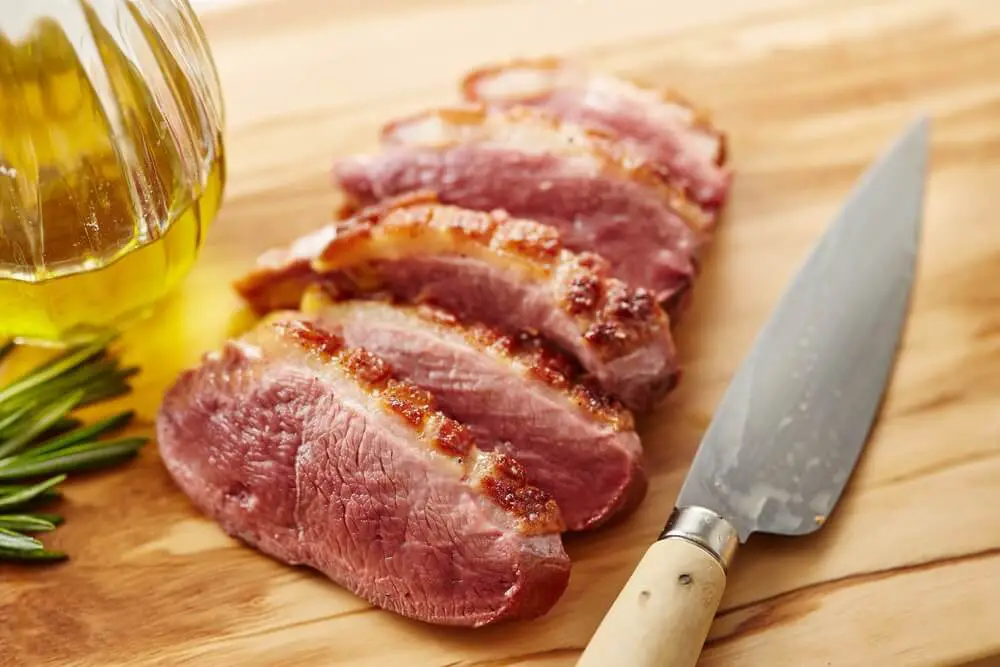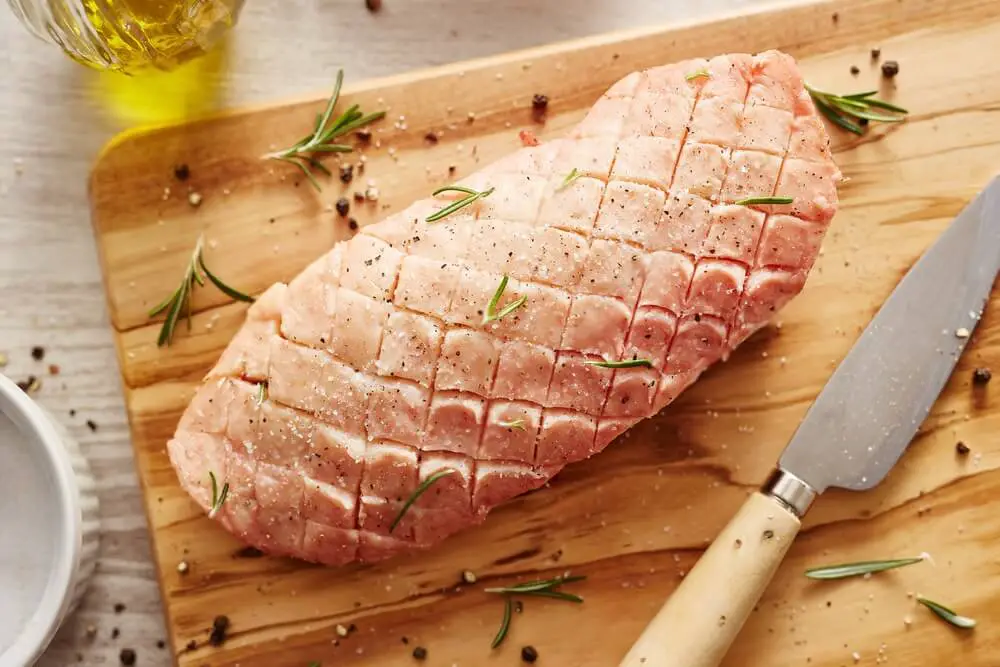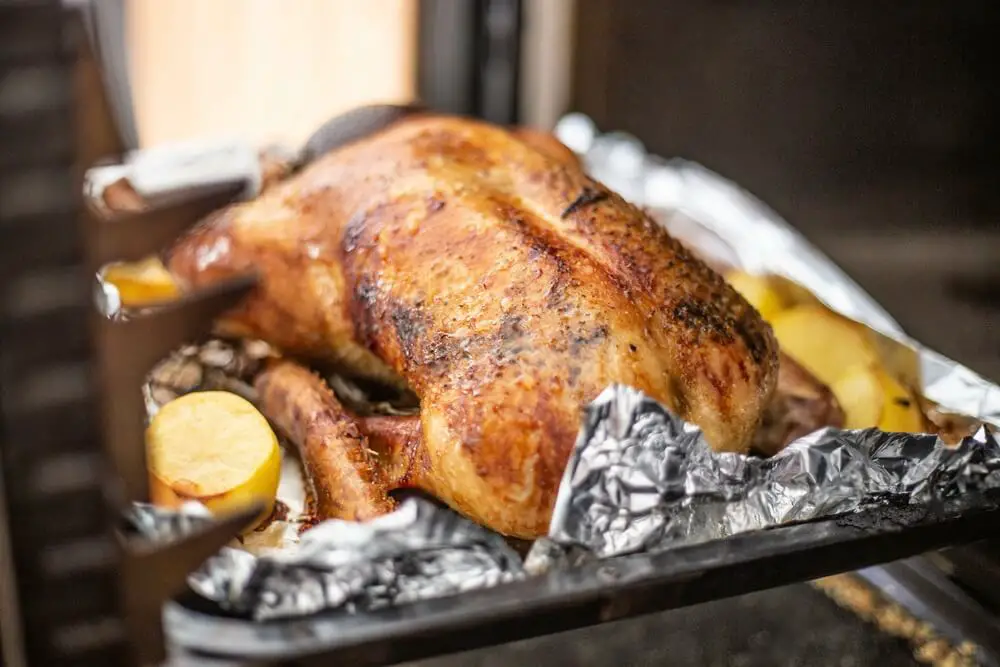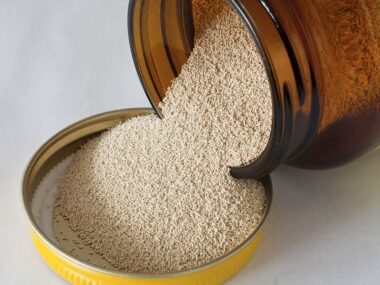Ever been curious about that crispy, golden-brown duck dish your foodie friend won’t stop raving about? Or maybe you’ve walked past a Chinese restaurant and caught an aroma so tantalizingly rich and savory that it stopped you in your tracks. If you’ve found yourself wondering, What does duck taste like? You’ve come to the right place.
Duck is one of those polarizing proteins—people either love it or they’ve never tried it. And for the uninitiated, the idea of wolfing down a bird that’s a common park resident can admittedly seem a little weird. But duck meat is unlike any other poultry you’ve had before.
While chicken and turkey are the buttery, mild-mannered lovebirds of the poultry world, duck is their rich, rebellious cousin that smokes into the party unapologetically late. With its bold, robust flavor and velvety, indulgent texture, duck offers a truly unique and memorable eating experience.
So what exactly does this tasty waterfowl bring to the table? Let’s ruffle some feathers and dive into the delicious details on what makes duck a savory revelation for meat lovers everywhere.
What does duck taste like?
If you’ve never tasted duck before, imagine the richest, most flavorful piece of poultry you’ve ever had, then multiply that by about a thousand. Duck meat is in an entirely different stratosphere from chicken or turkey when it comes to taste. While those conventional poultry picks tend towards bland and one-note, duck brings a thunderous chorus of intense savory, slightly sweet, and wildly umami notes to the party.
The first forkful of duck always seems to hit you with a wave of unctuously rich, savory flavor that coats your tongue and awakens your tastebuds. There’s an unmistakable robust earthiness and faint minerality that makes duck taste closer to red meat than white meat poultry. Yet it still retains a distinct poultry essence, with hints of the barnyard cutting through the decadence.
As you chew further, you may pick up on subtly sweet, almost nutty undertones that complement the saltiness. This natural sweetness prevents the aromatic flavors from becoming overwhelming. Many describe duck as having a faintly gamey taste as well – again highlighting its kinship with wild meats. But this gaminess is mild and delicate, never overpowering or off-putting.
What really sets duck apart is its luxurious, velvet-likefattiness. The thick, creamy layers of dense fat interwoven throughout the meat quite literally melt in your mouth as you eat. This succulent, buttery richness brings an incomparable lucious mouthfeel and depth of flavor. Each bite seems to blend seamlessly into a crescendo of luscious tastes and textures.
Duck’s flavor can range from intense to mild, depending on the specific breed and diet. While the mallard duck boasts the boldest, most robustly gamey, and savory profile, farm-raised critters like Long Island Pekins provide a more subtle and accessible entry point. Similarly, ducks fed a corn and soy diet take on a milder taste compared to their counterparts living off seeds, vegetation, and proteins in the wild.
Duck Meat Texture

Let’s start with the skin, because really, that’s what duck is famous for. Ideally cooked to crispy, lacquered perfection, duck skin shatters into crispy shards with each bite. The almost glassy exterior gives way to layers of dense, velvety fat that slowly dissolve over your tongue. It’s a captivating contrast between brittle and luxuriously smooth in the same masticated mouthful.
Beneath that gloriously rendered skin lies the plump, juicy meat that duck devotees obsess over. While leaner poultry like chicken and turkey can dry out quickly, duck’s generous streaks of interior fat bastes the meat from within during cooking. This allows the flesh to achieve a buttery, succulent richness unmatched by other fowl.
Duck breast, in particular, exhibits an extraordinarily silky, densely textured mouthfeel. Each bite offers the diner a substantial, meaty chew, making duck feel almost similar to tucking into a perfectly cooked steak. Yet there’s an unmistakable delicate tenderness to properly cooked duck that belies its hearty protein status.
The thick, copious fat striations throughout the meat are what give duck its voluptuous, melt-away quality. These creamy deposits quite literally liquify as you chew, smearing their luscious richness across your palate. It’s a sensation akin to biting into a stick of butter, but without being overly viscous or greasy. Just unadulterated, spoon-coating luxury.
how duck differs from chicken in taste and texture

Let’s start with taste. Whereas chicken is basically a blank canvas, taking on the flavors of herbs, spices, and marinades, duck brings its own uniquely savory-sweet flavor profile to the dish. Chicken’s mild, catch-all taste pales in comparison to duck’s robust earthiness and hints of delicate gaminess. Duck simply has way more going on in the flavor department—a veritable fusion of rich, distinctive notes.
Then there’s the issue of texture. Lean chicken can so easily dry out and take on a stringy, chalky quality. Even at its best, the meat remains light, lean, and relatively one-note. Duck, on the other hand, achieves a gloriously plush, melt-in-your-mouth consistency thanks to its bounty of interior fat streaking through the flesh. Biting into a duck is a multi-sensory experience; the crispy skin gives way to densely tender, buttery-rich meat that seems to dissolve over your tongue.
While chicken tends towards a soft, almost mushy composition when overcooked, duck’s hearty chew makes it incredibly forgiving. You’d really have to work to dry it out completely. There’s an incomparable luxuriousness and velvety “spread” over the palate as the lavish fats in duck liquify with each bite.
Beyond the poultry itself, duck fat is practically a delicacy that chickens simply can’t compete with. Chefs obsess over duck’s crisp-rendered fat for its extraordinary flavor and richness. You’ll never find anyone feverishly hoarding chicken schmaltz the way they do with duck fat. That liquid gold gets repurposed into everything, from banana bread to bird stuffing, for an instant upgrade in flavor and luxury.
From a health standpoint, it’s true that duck is higher in fat and cholesterol than lean chicken breast. However, duck also boasts higher levels of vitamin B12, iron, and other nutrients beyond what chicken provides. So while moderation is wise with any rich meat, duck can absolutely have a place as an occasional indulgence for health-conscious foodies.
Factors That Affect the Taste of Duck

A multitude of factors influencing how the duck was raised and prepared can create subtle (or not so subtle) variations in flavor. From the specific breed to the duck’s diet, cooking method and more, understanding these nuances allows you to better appreciate your plate.
Let’s start with the duck variety itself. Different breeds like the Pekin, Mallard, Muscovy, and Moulard can take on distinct taste profiles. For example, the Pekin duck (that quintessential Long Island variety) is prized for its moderate flavor, making it a great “gateway” duck for the uninitiated. The Moulard, a cross between Muscovy and Pekin, amps up the richness with its generous proportions of flavorful breast meat and ample fatty streaking. Then you have the “wild child” of ducks, the Mallard, whose robust, almost gamey flavor echoes its feisty origins.
Speaking of wild vs. domesticated, this divide also plays a major role in taste. The diet of a free-ranging wild duck consists of a diverse array of aquatic plants, grains, seeds, insects, and even tiny fish or crustaceans. This varied, protein-rich diet produces meat with an unmistakably intense, earthy, slightly gamey flavor. In contrast, farm-raised ducks fed a steady intake of simple corn and soy take on a milder, more approachable flavor profile. While still luxuriously rich, these ducks can’t quite match their wild counterparts’ full-bodied taste.
How the duck was raised extends even further into living conditions like access to forage, exercise levels, and stress. Ducks able to roam, flap their wings, and migrate reveal nuanced flavors from their active lifestyles. Their robust muscle development from constant movement translates into dense, nearly beef-like meat. But caged ducks living with little activity understandably lack some of those profound flavors. Advocates of ethical eating philosophies believe these limited movement ducks also fail to achieve their full, authentic taste potential.
The age of the duck at slaughter provides another major taste variable. Younger ducks under six months simply haven’t had time to fully develop their robust flavors or intramuscular fats. It’s only as ducks mature past this age that their succulent, full-bodied taste emerges to be truly savored. Most restaurants and duck connoisseurs agree that the prime window for peak duck deliciousness falls around the 6-7 month mark of age.
Finally, cooking technique plays a pivotal role in extracting the duck’s best possible taste and texture. Dry-heat methods like roasting allow the luscious fats to slowly render out, basting and enriching the meat from within. This makes roasted duck supremely moist and flavorful, with impeccably crisp skin. In comparison, braising in an aromatic liquid tames some of the robust notes and introduces new flavor dimensions. Other methods, like smoking or sous vide, open up additional taste experiences again. Masterful chefs wield these techniques skillfully to create their signature, mouthwatering duck dishes.
Storing and Defrosting Duck

Whether you’ve brought home gorgeous fresh duck breasts or frozen a bounty from your wintertime hunt, properly storing and defrosting this delicacy is essential for preserving its rich, nuanced flavors. Duck’s luxuriously fatty meat and delicate composition demand thoughtful handling to prevent spoilage or off-flavors from developing.
For fresh, never-been-frozen duck, keeping it chilled is absolutely paramount. Duck holds an impressive amount of moisture within all those succulent fats and proteins. And when coupled with its darker, denser meat, this creates the perfect breeding ground for harmful bacteria if not properly refrigerated. Always keep fresh whole ducks, breasts, or other cuts in your fridge’s coldest zone, ideally around 35°F or below.
Depending on your preparation plans, fresh duck can last between 3 and 5 days when stored this way. Leave it insulated in the packaging and place it on a rimmed plate or tray to catch any potential drips and cross-contamination. For longer storage, up to a week, you can opt to glaze the bird by rubbing the skin with butter or duck fat to seal in moisture. Again, be sure to catch any liquid seepage.
Once ready to cook, remove the duck from packaging and thoroughly pat it dry to ensure searingly crisp skin. Let it temper at room temperature for 30–60 minutes before cooking so the meat can achieve an even temperature throughout. Many chefs recommend a final drying period uncovered on a rack-lined baking sheet before searing, roasting, or grilling for impeccable rendering and crisping.
For frozen duck, storing it properly is equally crucial, as its fatty composition makes it prone to off-flavors from freezer burn. Always wrap portions tightly in moisture-proof wrapping like plastic freezer paper or vacuum-sealed bags after squeezing out excess air. Frozen whole ducks can last up to one year when stored at 0°F or below, while breasts and other cuts hold for 6–9 months. Mark the packaging clearly with the storage date.
When it comes to thawing, duck requires a gentle, gradual approach to prevent mushiness or moisture loss. Never attempt to quick-thaw by submerging the meat in water, which can quickly turn the meat into an unappetizing mush while increasing bacteria risks. Instead, plan ahead by moving frozen duck to the refrigerator 1-2 days before cooking to let it slowly defrost in that safe, chilled environment.
For faster thawing in a pinch, you can try the cold water bath method. Seal the frozen duck tightly in a leak-proof plastic bag and submerge it in a bowl or sink of cold water, replacing the water every 30 minutes as its temperature rises. Smaller duck portions, like breasts, may take 1-2 hours using this technique. Whatever you do, avoid room-temperature thawing, which allows the outer portions to become dangerously warm while the interior remains frozen.
Once fully thawed, duck can be kept refrigerated for 1-2 days before cooking according to desired preparation. Always check for any off-odors, sliminess, or discoloration that can indicate spoilage or freezer burn, despite your best efforts. A little due diligence in storing and thawing goes a long way in preserving duck’s phenomenal flavors and integrity.
For the devoted duck lover regularly relishing this delicacy, investing in a high-quality vacuum sealer for long-term frozen storage makes perfect sense. It allows you to stock up when fresh duck is readily available and always have exquisite portions perfectly portioned and on-hand. Just be sure to defrost low and slow when ready to unlock those splendidly rich tastes and textures once again.
Cooking and Serving Duck

Let’s start with that incredibly crunchy, lacquered skin everyone obsesses over. Achieving perfect crispness comes down to rendering every last bit of luscious fat out from underneath through prolonged, dry heat exposure. Roasting duck slowly at a fairly high temperature (around 400°F) allows the subcutaneous fat layer to continuously baste and brown the skin from within. Delicately pricking the skin all over also helps expel excess fat for maximum crunch.
Once that skin reaches peak crispy, shatter-with-a-fork perfection, you’re left with the most outrageous textural contrast against duck’s velvety, molten-rich meat. It’s this dichotomy that hooks people into duck-adoration for life. Imagine slicing through a thin, tawny, clatteringly crisp exterior that instantly gives way to densely tender, succulent flesh. The first bite delivers an ambrosial melding of crunchy and luxuriously velvety textures like no other protein can provide.
In Fordoba and pursuits like Peking Duck, the crisping technique gets even more elaborate. Inflating the bird’s chest cavity and carefully hanging it during cooking practically fries that lacquered skin until glassy and taut. When skillfully carved tableside, the meaty, skin-swaddled duck slices provide a showstopping theatrical experience as each piece crackles apart.
Beyond its stunningly crisp exterior, duck’s cooking versatility opens up incredible flavor opportunities as well. Roasting on a vertical spike allows those prized fats to continually drip away, crisping the skin while preventing the meat from swimming in excess grease. The result is a supremely moist duck with a profoundly distilled, concentrated flavor free from any flabbiness.
For richer, velvety preparations, gently braising duck legs and thighs in an aromatic liquid tenderizes the dense meat while infusing it with complementary tastes. Think velvety confit-style duck legs rendered luxuriously soft in their own abundant fatcaps, waiting to be crisped separately for service. Or Philip duck ragù melting into a luscious, savory ragu over pappardelle. These lush braises allow duck’s bold, distinctive flavor to mingle with other ingredients to transcend new heights of deliciousness.
And then there’s the near-liquid gold liquid itself—the extraordinarily flavorful, versatile duck fat rendered through cooking. This prized culinary treasure gets repurposed into everything from sautéed vegetables to perfect panisses to reinventing baked goods into indulgent masterpieces. Chefs obsess over their stash of velvety, deeply savory duck fat for searing, frying, and enriching an endless array of dishes with exceptional flavor.
Regardless of preparation style, duck’s generous proportions make it ideal for showcasing across multiple courses. Crispy, mahogany-skinned duck breasts can anchor a celebratory entreé alongside fruit compotes or rich demi-glace. The flavorful pulled meat and crisped skin can get whimsically reimagined into duck nuggets or duck fat-adorned fries for passing appetizers. Even the bones get simmered into intestinally rich, deeply savory duck stock for sauces, jus or soup.
Duck Nutrition and Health Benefits
While duck undoubtedly reigns as one of the world’s most indulgent, luxuriously fatty proteins, this delicacy also happens to pack an impressive nutrient profile. That luscious meat boasts a surprising array of vitamins, minerals and compounds that deliver legitimate health benefits alongside those decadent flavors and satiny textures.
Let’s start with duck’s most celebrated attribute—those velvety, flavorful fats. While higher in overall fat content compared to leaner poultry like chicken breast, duck makes up for it with an abundance of highly coveted monounsaturated fats. These are the same heart-healthy lipids found in olive oil and avocados that can actually improve cholesterol levels and reduce inflammation. Duck’s unique fatty acid profile provides over 50% of calories from monounsaturated fats, compared to only 30% in chicken.
Duck also contains higher amounts of polyunsaturated omega-3 and omega-6 fatty acids compared to other domesticated fowl. Omega-3s like ALA pack anti-inflammatory properties and promote brain health, while omega-6s aid growth, immune function, and metabolism. The ideal ratio of these essential fats gets skewed in most modern diets, but duck helps nudge levels back into a healthy balance.
Beyond the “good” fats, duck packs a meaty punch of high-quality, complete protein. With around 25 grams of protein in a 3.5-ounce serving of breast meat, duck provides all nine essential amino acids required for muscle growth, repair, and overall metabolic function. Its amino acid profile, particularly high levels of leucine, is similar in quality to beef while outpacing chicken.
Where duck really shines is in its impressive cluster of micronutrients. A serving delivers over 100% of the RDI for anti-oxidizing selenium, along with hefty doses of niacin, phosphorus, riboflavin, iron, zinc, and vitamin B6. Duck emerges as one of the best sources of these vital minerals and vitamins required for energy metabolism, immunity, red blood cell production, and neural health.
Even the much-maligned “bad” saturated fats in duck may offer some redeeming qualities. In moderation, they provide quick-burning energy and contain immune-fortifying antimicrobial and antiviral properties. Studies have even found that a that a reasonable saturated fat intake can improve HDL “good” cholesterol levels.
FAQs
What is the best way to render duck fat?
There are a few effective methods for rendering out that gloriously rich, liquid gold duck fat. One way is to slowly roast duck at a lower temperature (around 300°F) for an extended period, allowing the fat to gently melt and drip from the bird. Alternatively, you can carefully prick holes all over the duck skin and gradually cook the bird over a skillet or grill, spooning out the rendered fat as it pools. Cold duck fat confit is another byproduct option where you gently poach duck legs in their own fat.
Is it safe to eat duck meat, whether it is rare or medium-rare?
Unlike chicken, duck is considered safe to consume at lower interior temperatures due to its increased pathogen resistance at higher pH levels. The USDA recommends cooking duck breasts to an internal temperature of 170°F, but many chefs actually aim for the meat to reach just 130°F for a rosy, luxuriously moist, and tender medium-rare doneness. Use a probe thermometer to hit your preferred temperature while avoiding overcooking.
What do I do with the duck’s liver, gizzards, etc.?

Duck’s nutrient-dense offal shouldn’t be wasted! The rich, buttery-flavored liver makes an incredible mousse, or pâté, when pureed with duck fat, cognac, and seasonings. Gizzards can be braised or confit until tender for rustic appetizers. Even the duck’s tongue and feet get utilized in some global cuisines. French cooks, especially, maximize every last morsel.
Do ducks need to be brined or marinaded?
Thanks to its ample fat content, duck doesn’t typically require brining like a lean turkey breast might. In fact, the salt in a brine solution can toughen up a duck’s muscle fibers. For extra insurance against drying out, consider air-drying the skin uncovered in the fridge or simply glazing with a flavorful duck fat or honey-vinegar mixture prior to cooking.
Can you overcook duck? How do you know when it’s done?
Yes, despite its generous fat marbling, duck breast and other portions can absolutely become overcooked into an unpleasantly dry, tough, and chewy state if not carefully prepared. Using an instant-read thermometer is your best tool for monitoring doneness. Aim for duck breasts to reach just 135°F internally for succulent, medium-rare perfection.
What permits ducks’ distinct, “gamey” flavor?
Compared to commercially raised poultry like chicken, ducks naturally develop more intensely earthy, almost mineral-like “gamey” flavors from their wild omnivorous diets filled with aquatic plants, insects, and small fish. Their constant foraging activity also contributes to a robust, pleasantly funky essence within the dense meat. This aromatic savoriness is coveted by duck connoisseurs.
How do I pick a good-quality fresh duck?
When selecting a fresh whole duck, look for plump, unblemished skin that is off-white to cream-colored without any yellowing. The skin should be thick and opaque, not thin and translucent. Gently feel for good meat coverage over the breast area. The duck should feel hefty for its size. Avoid any ducks with torn skin, bruises, or off-odors.
What are some non-traditional ways to cook duck?

While roasting and confit are classic preparations, duck is versatile for many techniques. Try grilling duck breasts or smoking a whole duck over woodchips. Duck legs braise beautifully into stews and ragus. The shredded meat makes amazing duck carnitas, or duck-fat fried rice. Duck fat also enriches everything, from baked goods to popcorn.
How do I avoid a greasy mess when cooking duck?
Use a rack inside your roasting pan to elevate the duck and allow the fat to drain away as it renders. Or, prick the skin all over with a fork or metal skewer so fat can easily escape instead of becoming trapped. Finish duck breasts skin-side down in a hot skillet to crisp the skin and drain off fat.
What are some good sauce pairings for duck?
The rich flavor of duck beautifully complements both sweet and savory sauces. Try fruit compotes like cherry or orange, thick demi-glace, Asian plum or hoisin sauces, chunky chutneys, or creamy mushroom or peppercorn sauces.
How do I get that perfect crispy duck skin?
Start by pricking holes all over the skin to help render out fat. Let the duck sit uncovered on a rack in the fridge to dry out the skin. When ready to cook, sear the duck at high heat first to quickly crisp and tighten the skin before a slower roast. Finish by broiling for the ultimate crunch.
Are there any special carving tips for ducks?
For crispy-skinned whole roasted duck, use a sharp carving knife to slice down along one side of the breastbone to release the entire breast. Then run the knife along the wishbone to remove the second breast half. This keeps more of the delicate, juicy meat and crackly skin together.
Conclusion
Whether you crave the bold, gamey intensity of a free-range mallard foraging on nature’s bounty or prefer the elegant, subtle opulence of a corn-fed Pekin duckling, there’s an exquisite duck experience tailored to your palate. Specialty breeds like the buttery-flavored Muscovy and intricately marbled Moulard push indulgence even further with their velvety, melt-in-your-mouth textures.
For the dedicated gourmand or even the casual poultry lover finally taking the plunge, duck stands as a true delicacy worthy of appreciating, savoring, and revering. It’s an indulgence shaped by both culinary mastery and nature’s wild artistry. With patience, technique, and an openness to its nuanced flavors, duck ascends into an unmatched level of gastronomic transcendence.



